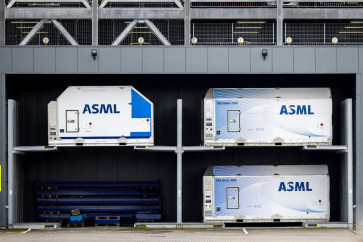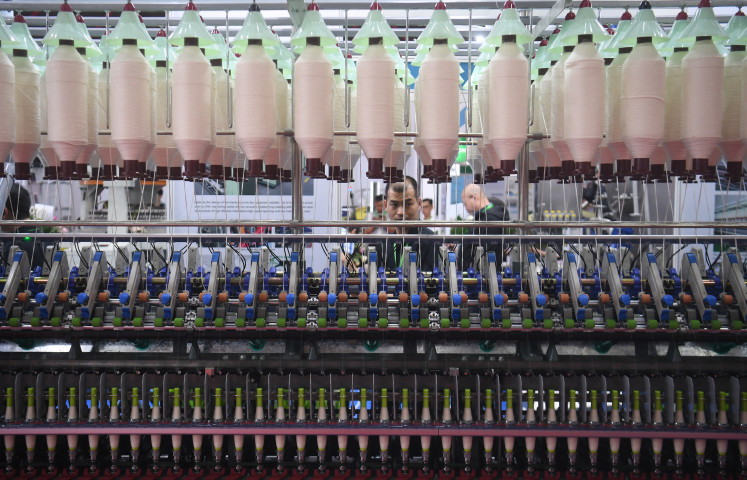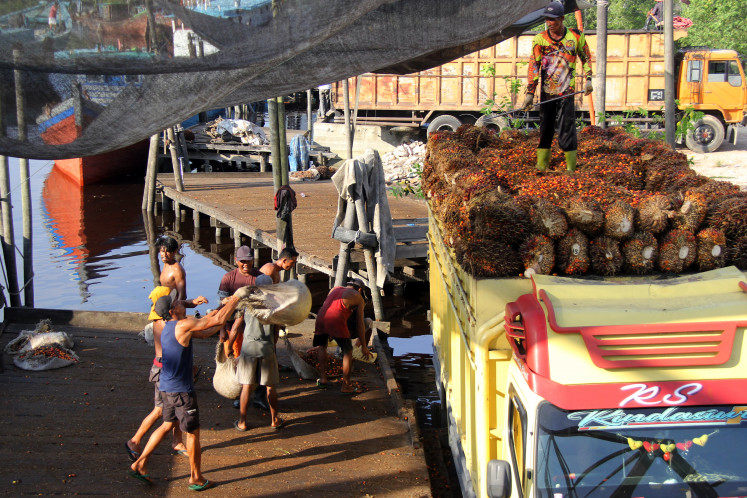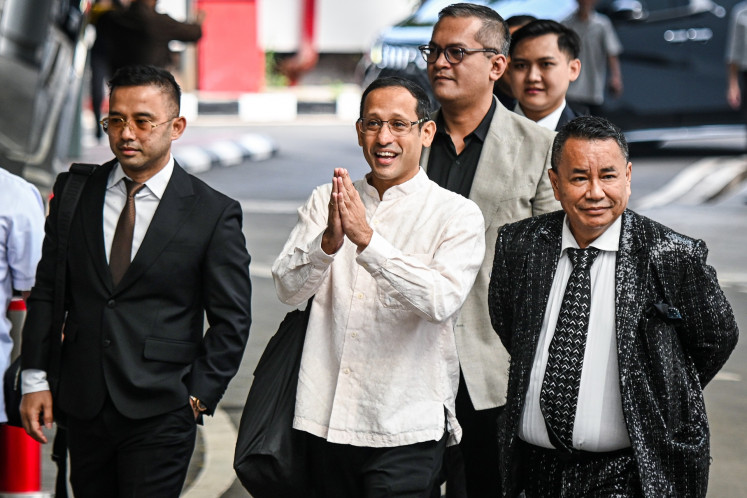Popular Reads
Top Results
Can't find what you're looking for?
View all search resultsPopular Reads
Top Results
Can't find what you're looking for?
View all search resultsMaking Indonesia 4.0 and needs for structural reform
Import restrictions on food ingredients such as salt or sugar hit MSMEs hard as they do not have access to affordable inputs.
Change text size
Gift Premium Articles
to Anyone
I
n 2012, Timothy D. Cook, the CEO of Apple, made an announcement that Apple would open a new factory and make Mac computers in the United States, making it the first company to produce US-made computers after years of its products being assembled in China. A few months later in 2013, the new factory opened in Austin, Texas and began producing the top line of Macintosh computers. But then, the company encountered a seemingly simple issue, which turned out to have significant consequences — Apple struggled to get enough screws for its Macs.
The news, written by Jack Nicas in the New York Times, highlighted that moving a factory was not as simple as we generally thought. In China, Apple could get supplies from manufacturers producing large quantities of custom screws at short notice. The screw shortage in the US turned out to be a serious problem that led Apple to postpone sales of its computers.
The second story comes from home. At the end of 2021, Jakarta Governor Anies Baswedan announced he was raising the minimum wage by 5.1 percent, higher than the original increase of 0.38 percent. Responding to this, businesses planned relocating their factories to Central Java — a province perceived to have a lower minimum wage. It is less clear whether they actually moved, but a report by the Indonesian Employers Association (Apindo) claimed that around 150 companies, mostly footwear and textile factories, relocated factories to Central Java because of the minimum wage.
The two tales tell the same story about the dynamics of the manufacturing world. Manufacturers come and go. Some decline and set, while others move to survive and thrive. But those two stories have different endings. Apple, despite labeling its products as being designed in California, the US, remains assembling the bulk of its products in China. Meanwhile, we may see more and more textile factories leave the western part of Java to Central or East Java.
Why do some factories or firms find it easy to move while others stay? Economics give some clues: factories are built close to the market, people or resources. But these days some industries depend heavily on the web of networks connecting multiple factors. Tech companies, such as Apple, rely on the overall supporting ecosystem. For Apple, it has found no country that can match China’s combination of scale, skills, infrastructure and cost for producing the necessary materials. This may not be the case for labor-intensive industries such as textiles.
These stories also provide a glimpse of the future of supply chains and employment as well. Even long before COVID-19, Apple had a plan for reducing its dependency on China’s suppliers. Yet its hunt for new production centers has not materialized on a large scale. This makes the case that despite the supply chain disruption caused by COVID-19, we may not see a large reset of supply chains.
However, retrenchment on global supply chains would have dire implications for employment. We have seen that the pandemic-induced shortages of critical supplies have reinforced calls in developed countries for reshoring production — moving supply chains back to developed countries. But we seem to forget that global value chains (GVCs) have been at the center of global prosperity. As GVCs expand, many poor countries increase their participations in global trade. This has been the engine of growth for the East Asia region. Reshoring would mean less job creation in developing countries.
These facts about tech manufacturers offer lessons for Indonesia, which aspires to boost Industry 4.0. Indeed, digitalization has been one of the major issues raised as part of Indonesia’s Group of 20 (G20) presidency. So far conversations about tech companies generally are limited to fintech or commerce. Perhaps, this can be attributed to their potential that is relatively easy to assess. A widely quoted estimate suggests that the digital economy is worth around US$70 billion, of which e-commerce is around $53 billion according to Google, Temasek, Bain in 2021. Still, Industry 4.0 should move beyond e-commerce.
From the plan laid out by the government for Industry 4.0, some industries are destined to be the drivers of Industry 4.0, comprising food and beverage, automotive, textiles and apparel (including footwear), chemical and electronics. These industries cover 60 percent of manufacturing output, contribute to 65 percent of exports and employ around 60 percent of manufacturing workers. These are critical industries for Indonesia’s development.
The plan of Industry 4.0 — known as “Making Indonesia 4.0” — require a profound transformation in which firms discover, innovate, distribute and produce goods and services by leveraging new upcoming digital technologies. There are some challenges though. Many Indonesian firms, around 64 percent, continue to perform basic tasks and lack innovation. Meanwhile only 6 percent of firms have adopted advanced technology such as machine learning, according to a study by Aswicahyono and Rafitrandi in 2020. Low technological adoption among firms leads to lower demand for digital skills, with no potential for skill upgrading.
Making Indonesia 4.0 then, calls for significant structural reform. The government’s plan to expand digital infrastructure as part of Industry 4.0 is welcome. Yet we need to address some critical issues that, although not directly related to digitalization, have a substantial impact on the future of Industry 4.0 in Indonesia.
First, as businesses across the globe rethink their supply chain strategies, it is a good opportunity for us to identify the factors behind low competitiveness and remove them. For example, the food and beverage industry, one of five industries destined to be the key to Industry 4.0, is among the most heavily regulated industries. Import restrictions on food ingredients such as salt or sugar hit MSMEs hard as they do not have access to affordable inputs, according to Aswicahyono and Rafitrandi in 2020. Without low-cost inputs, these MSMEs cannot enter international markets competitively.
Second, Indonesia needs digital talent. Hence, opening labor markets for digital talent would benefit Indonesia’s economy. Recent data from Linkedin and the World Bank suggest that between 2017 and 2019, Indonesia retained talent at around 2.51 per 10,000 people. This is far lower than Singapore, which attracts around 18 per 10,000 people. Singapore has also successfully attracted around 459 talents per 10,000 with skills in artificial intelligence. Singapore is also the most attractive country in the region for skills in mobile applications and human computer interactions — the critical skills for the future of digital technologies. Meanwhile, the top skill gained in Indonesia remains analytical reasoning — a rather basic, despite being important, talent. Thus, Indonesia is in dire needs of attracting talent with future digital skills. Allowing mobility for high-skill talent would close the digital skill gap.
Third, Indonesia requires reliable and efficient services that supports key industries. Countries closely integrated into global value chain and thus becoming top exporters are always countries with reliable and efficient services. Critical services such as logistics, transportation, telecommunication, and financial services are critical for international trade. Digitalization in these sectors, particularly logistics, has improved their efficiency. This is the major driver of growing Indonesia e-commerce. To expand further, Indonesia needs to extend beyond digital technologies in these services.
Finally, we need data that help us to assess better the size and potential of Industry 4.0 and the digital economy. Up until now, data collected by Statistics Indonesia (BPS) have not changed much over the past 20 years. Take for example data collection for the National Social and Economic Survey or Manufacturing Survey that continue to collect the same information they have for the past 20 years. Thus, we need to establish measures that incorporate the progress of technological adoption. This allows us to better monitor and lay out better policies for promoting technological development in Indonesia.
--
Head of Mandiri Institute










